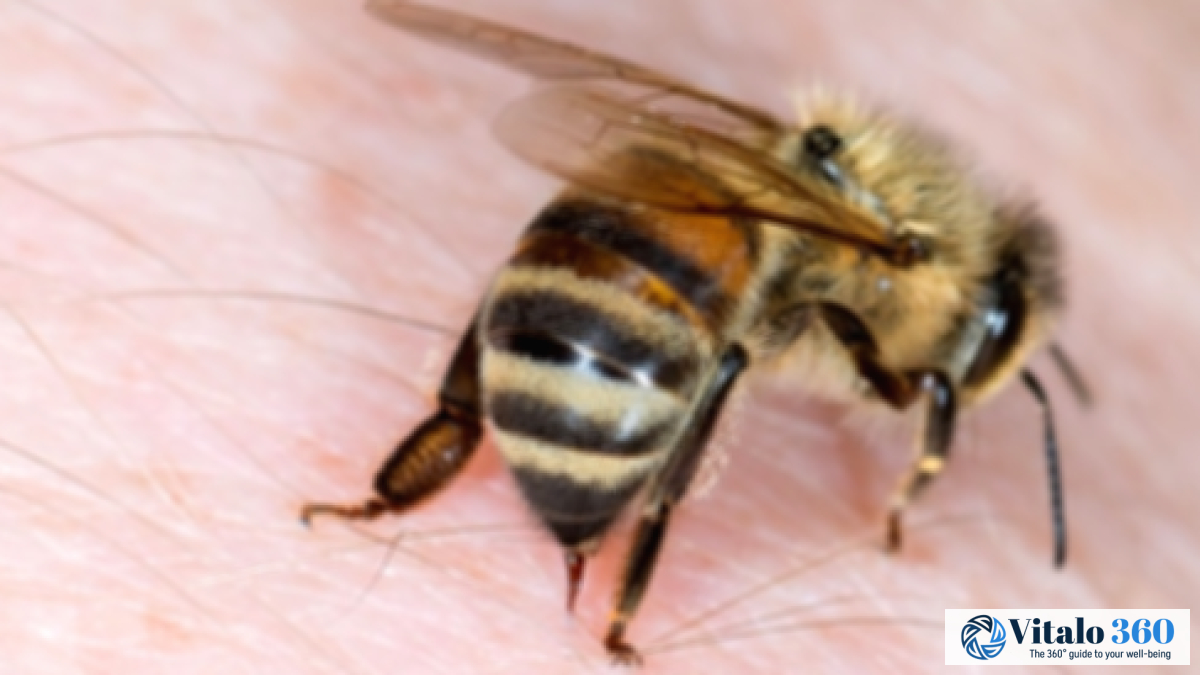Discover simple, natural home remedies for bee sting relief, including honey, baking soda, and apple cider vinegar, to soothe pain and reduce swelling; know when to seek medical attention.
Okay, feeling a bit itchy just thinking about bee stings, aren’t you? It’s like our bodies are just big magnets for these buzzing little guys, and sometimes, things get a bit too personal. We’re gonna dig into some easy, at-home ways to deal with those oh-so-fun bee stings.
- What Happens When a Bee Stings You?
- Natural Remedies for Bee Sting Relief
- When Should You See a Doctor?
- How to Protect Yourself From Bee Stings?
It’s not that a bee sting is seriously dangerous to the extreme, um, except if it causes risks that threaten the life of the person; what is important is your immediate aid for the symptoms of the bee sting!
What Happens When a Bee Stings You?
So, when a bee stings, it leaves its stinger behind right in your skin. That stinger keeps pumping venom into you, it’s this substance from the bee’s body, that, well, causes all the trouble shortly after the sting, yeah. It’s definitely not the kind of honey we’re talking about here.
The effect of a bee sting on your body often depends; it may just give you some pain. And, honestly, it can cause pretty bad reactions for folks allergic to bee venom.
Minor allergic reactions, they show up with symptoms like redness, really bad itching, and swelling right where you got stung. But a severe allergic reaction can show up with these things:
- Skin rash.
- Hives on the skin.
- Really bad itching.
- Swelling and puffiness in the throat and tongue.
- Pain when breathing.
- A really fast heartbeat.
- Nausea and throwing up.
- Diarrhea.
- Dizziness and light-headedness.
- Losing consciousness.
If any of this happens, get yourself to a doctor or the ER ASAP, because, you know, it could turn into something called “anaphylactic shock,” which, honestly, could be life-threatening!
Natural Remedies for Bee Sting Relief
If you’re not allergic to bee stings, you can totally treat it and cut down on its effects pretty easily. There are some simple home remedies that can help, but first, make sure you do the following:
- Get the stinger out of your skin super carefully using something like a credit card. Do this so you don’t push any more venom into your body.
- Wash the sting spot with soap and water.
- After that, put some ice on the spot to help stop the venom from spreading.
Even though the stuff we’re about to talk about for bee stings isn’t, like, scientifically proven, they can still help. A lot of these things are used in homes every day, just to make you feel a bit better.
1- Honey
Honey, that totally natural thing, can help with pain, itching, and redness. Just put some honey on the sting, cover it with a loose bandage, and leave it for, like, an hour. You can use real honey, not that super processed stuff.
2- Baking Soda
Mixing baking soda with water can help, too. Baking soda can cancel out some of the bee venom effects, and it also soothes the pain, itching, and swelling.
Mix a bit of the stuff with water to make a paste, then put it right on the sting spot. After about 15 minutes, wash it off, and just repeat this a bunch of times if you need to.
3- Apple Cider Vinegar
Apple cider vinegar may also help cancel out bee venom effects. Soak a clean cloth in apple cider vinegar and put it on the sting for about 15 minutes.
4- Mud packs
While it might be unlikely that mud packs contribute to the treatment of bee stings beyond relieving pain they can be useful in practice. Place wet mud on the sting site, and the mud will then dry.
5- More Natural Goodies
You might also get some help from other natural stuff to help with bee stings:
- Aloe vera gel: Cut off a small slice of aloe vera leaf and put the gel right on the spot.
- Tea tree oil: This oil is good at fighting swelling and pain. Just mix a tiny drop of it with another oil (like coconut or olive oil) and dab it on the sting.
- Lavender oil: Dab a drop of this oil right on the sting.
We’ve noticed that some folks are turning to things like CBD creams for localized relief. We haven’t looked into it, so you might want to do some research and see if a CBD topical cream might be something worth including in your bee sting kit, as it has been known to reduce pain and inflammation on the spot.
When Should You See a Doctor?
Usually, bee stings don’t need a trip to the doctor, but if you have a really bad allergic reaction, things like trouble breathing, dizziness, or skin rash, you better get it checked out.
It’s also smart to see a doctor if you get stung by a whole swarm of bees, not just one. One sting is one thing, but multiple stings, that could be something entirely different!
How to Protect Yourself From Bee Stings?
If you know you’re gonna be outside, especially in the countryside, try these easy ideas to keep bee stings away:
- Stay cool and calm when you’re out among flowers and plants.
- Don’t swat at bees you find outside or in nature.
- Stay away from spots with sweet smells.
- Don’t wear bright colors or clothes that have flower patterns that attract them.
- Keep your food covered up tight.
- Try to avoid open car windows when you’re driving.
- Skip sugary drinks from open cans.
- Be careful around uncovered trash cans.
Key takeaways
- Bee stings trigger venom release, causing pain and allergic reactions.
- Home remedies like honey, baking soda, and apple cider vinegar can provide relief.
- Seek immediate medical help for severe allergic reactions or multiple stings.
FAQ, Myth & Facts
Can you be allergic to bee stings even if you’ve been stung before without a reaction?
Yes, allergies can develop at any time. Just because you weren’t allergic before doesn’t mean you can’t become allergic later in life.
Is it necessary to remove the stinger?
Yes, remove the stinger as quickly as possible. It continues to release venom into your skin for a short time, so prompt removal can reduce the amount of venom you receive.
Does ice actually help with the swelling?
Yes, applying ice to the sting site can help reduce swelling and numb the area, providing temporary relief from pain and itching.
Can you use toothpaste for bee stings?
While not scientifically proven, some believe toothpaste can neutralize bee venom, reducing pain and itching. However, it’s not a substitute for proven remedies or medical treatment.
I remember this one time, I was out hiking, and uh, I totally wasn’t paying attention and ended up walking right into a bush with a whole bunch of bees. I got stung like five times! I didn’t even know what to do. I felt like I was burning all over.
My kiddo got stung in the park, and he was freaking out! I had no clue what to do, but another mom told me to put some mud on it. Honestly, it seemed to calm him down a bit, and he stopped crying pretty quickly.
We always keep some baking soda and vinegar in the house, just in case. My hubby got stung while gardening last summer, and the baking soda paste seemed to help him feel better really fast.
Honestly, dealing with bee stings can be a bit of a pain, but knowing a few simple tricks can make all the difference. Just remember to stay cool, get that stinger out, and maybe slap some honey on it. Who knew honey could be more than just a tasty snack, right?









